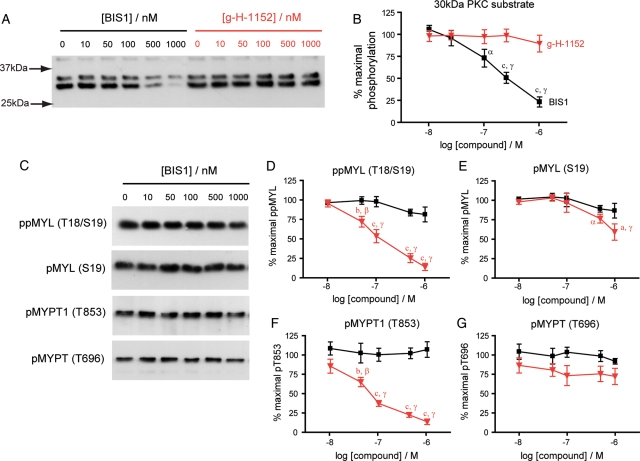Figure 6.
g-H-1152 does not attenuate PKC signalling and inhibition of conventional PKC isoforms causes no significant decrease in MYL or MYPT1 phosphorylation. Resting myometrial cells were treated for 40 min with either bisindolylmaleimide I (BIS1) or g-H-1152 at the concentrations shown; 0.1% DMSO was added to control wells. Both compounds were used in tandem during each experiment. Cell lysates were subjected to immunoblotting using a PKC substrate antibody (A) and antibodies to detect total and phosphorylated MYL and MYPT1 (C), representative blots are shown. Signals from phospho-specific antibodies were normalized to those obtained from the associated total antibody, and were expressed as a percentage of the non-treated value. (B) 30 kDa PKC substrate phosphorylation; (D) ppMYL (Thr18/Ser19) levels; (E) pMYL (Ser19) levels; (F) pMYPT1 (Thr853) levels and (G) pMYPT1 (Thr696) levels. Data points represent mean ± SEM, n = 5, black: BIS1 and red: g-H-1152. Statistical significance was determined using two-way ANOVA and Bonferroni post hoc tests to compare both the effect of one compound against the other (a: P < 0.05, b: P < 0.01 and c: P < 0.001) and the effect of increasing dose (α: P < 0.05, β: P < 0.05 and γ: P < 0.001 compared with non-treated cells).

